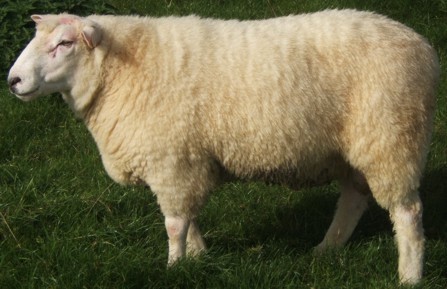Type the name of the breed you're looking for below
[wpdreams_ajaxsearchlite] Don't see the breed your're looking for? Click here and let us know!
Galway sheep
| Place of Origin | Ireland |
| Origin | The Galway breed was developed in the West of Ireland,as a result of the importation of English Longwools from the late 17th century onwards. From the middle of the 18th century Robert Bakewell's Dishley Leicester, also know as the New or Improved Leicester, was exported to Ireland in large numbers, in particular to the estate of Bakewell's associate, Lord Roscommon, later Lord Sheffield. The breed which developed was for many years known as the Roscommon, and a Flock Book of Roscommon Long-Wool Sheep was established in 1895, surviving until at least the 1920s. In 1923, by which time the Roscommon breed society was ailing, a group of breeders in Galway founded the Galway Sheep Breeders Society at Athenry, County Galway, and inspected over 6,000 ewes and 200 rams, presumably sheep of Roscommon type, admitting 10% of these to the new register. It is probable that the selection was for a slightly neater type of sheep than the old Roscommon. In 1969, a recording scheme,which continues today and is mainly aimed at improving prolificacy, was started with the help of the Department of Agriculture and An Foras Taluntais (now Teagasc). Average litter size for 2 to 4 year old ewes in Irish pedigree flocks in 1999 was 1.62; the best flocks have achieved 2.0. Commercial Galway ewes are relatively common in the west of Ireland but the pedigree flock is small, with approximately 230 ewe lambs registered in 1996. The total United Kingdom population is now approximately 120 adult breeding ewes in 16 flocks. The Galway is included on the Rare Breeds Survival Trust's Priority list. |
| Purpose | Meat, Fiber |
| Characteristics | The Galway was a large, white-faced polled breed and, though classified as Longwool, did not have the very long staple characteristic of breeds such as the Lincoln and Leicester Longwool. It bore,as the Galway does, an almost uncanny resemblance to surviving prints and paintings of Bakewell's sheep, being perhaps, closer to the Dishley breed than any of the English breeds which were influenced by Bakewell's stock. The Galway is a large sheep, average bodyweight of mature ewes being 74 kg (165 lb). It is hornless, with a white head with a little wool on the poll. The nostrils are dark in coluor, though occasional pink can occur, evidence of the Merino influence in Bakewell's Leicester. This is also evident in the quality of the wool. The fleece is moderately long, with a fine texture and a broad staple. About 80% of fleeces grade either Super Select (50s/54s) or Pick & Super (54s /56s). Points of the Galway sheep Color White Head - Hornless;back of head between and underneath the ears covered with short wool and showing a medium bob. Ears of good length and fine texture and free from black or brown spots. Nostrils dark in color and wide. Ram should have bold masculine head. Neck -Thick short and well set Shoulders- Well laid and level and wide at top Back -Long and level with strong wide loin. Rump wide and well fleshed back bone not prominent. Barrel- Deep thick and long with straight underline Legs- Medium length straight square and well apart, having good bone and covered in wool to the knees and hocks. Slight feather on hind legs below hocks permissible but not desirable. Hind quarters deep, full and broad. Feet sound and well shaped with short straight pasterns.. Hoof black with sound horn. Fleece- White and moderately long. Fiber -wavy and of fine texture; staple- broad, closely set and free from tips.Belly well covered with short thick wool. The fleece in general should be as uniform in fiber texture as possible. Skin- Light pink. The Galway ewe is a good producer of finished lamb when bred pure and is also used for crossing with Down and Continental lambs to produce early lamb. The Galway ram is a good producer of crossbred ewes from hill breeds, and the Galway Greyface (Galway X Blackface) is particularly favored in Ireland. |



